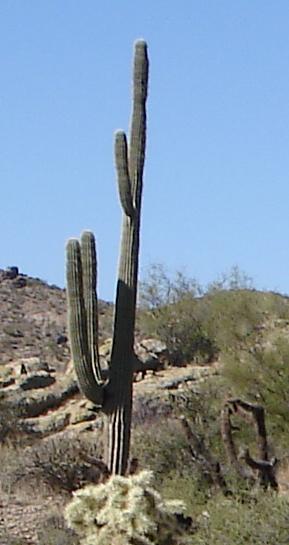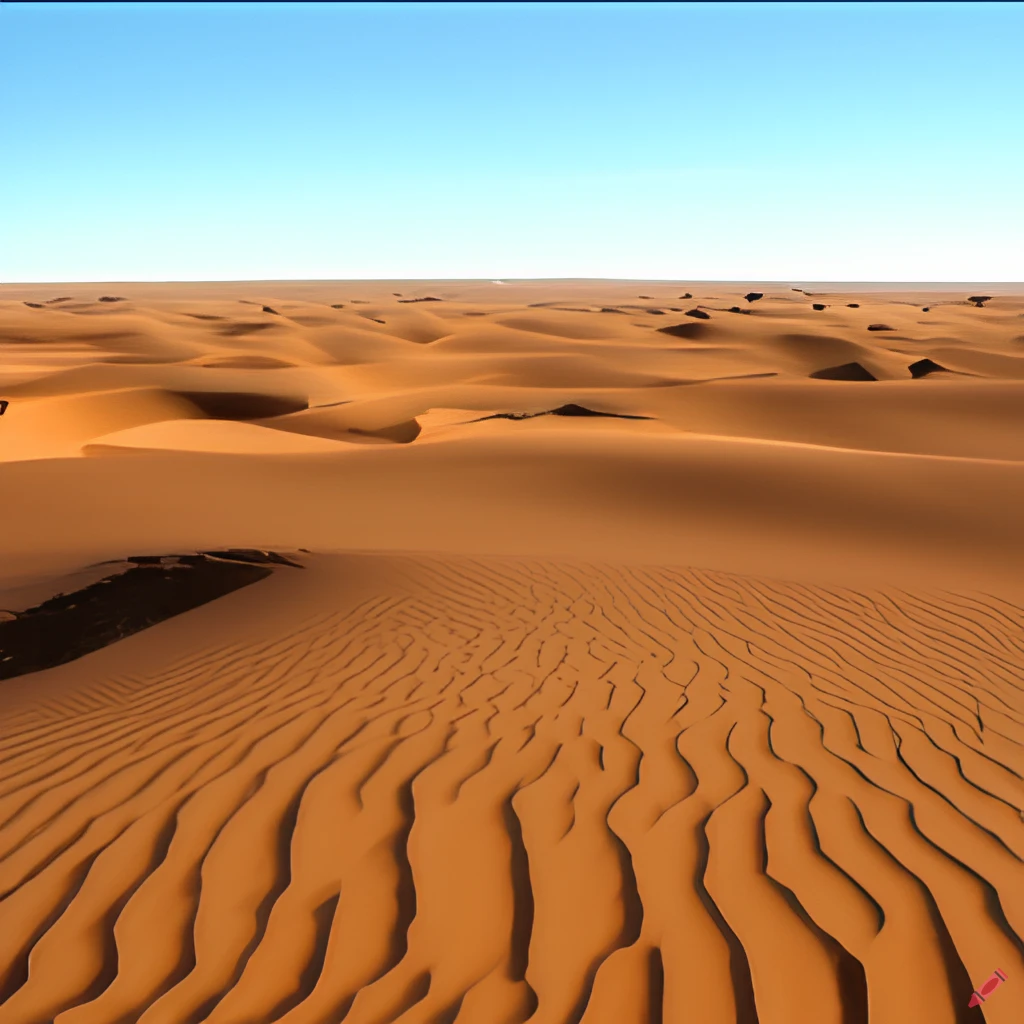- Air Homepage
- Global Warming
- Aridity Index
Aridity Index: Understanding Dryness Can Shape Our World
Decoding the Dryness Score - How do you tell if a place is a lush oasis or a deadly desert? Get the Aridity Index, a simple equation that divides rain by potential evaporation to give us a critical score.
Find more on humidity.
Would you like to live in a desert? The desert can be a place of extreme beauty and tranquility. It's a great place to explore and reconnect with nature despite the harsh environment. There's something inspiring about the vastness of the landscape and the serenity of the environment.
Why do we care about desertification? Desertification is a huge environmental problem around the world. As a result of climate change, deforestation, overgrazing, and unsustainable land use practices, fertile land becomes dry, arid, and unproductive. Desertification is a problem for several reasons:
- Desertification causes habitat loss and biodiversity decline. Plants and animals can become extinct or endangered when vegetation cover is destroyed, soil is degraded, and water sources are lost.
- Desertification can make it hard to grow crops or graze livestock because fertile land is lost. Particularly in areas where people rely on subsistence agriculture, this can cause food shortages and famine.
- Dust and sand storms can cause respiratory diseases due to desertification. Water and food shortages can also cause malnutrition and dehydration.
- Desertification can lead to forced migration, leading to conflicts over resources and competition for land and water. Desertification can also lead to enhanced climate change by reducing the land's ability to absorb carbon dioxide, leading to more greenhouse gases.
Therefore, addressing and preventing desertification is crucial to protecting biodiversity, ensuring food security, maintaining human health, and promoting peaceful coexistence.
How does aridity index relate to climate change?
It's a measure of how dry or arid a region is and it's usually calculated by dividing annual precipitation by annual potential evapotranspiration. The amount of water that would be lost by evaporation and transpiration if there were no water restrictions is potential evapotranspiration.
Areas with low aridity index values are humid and have more water resources, while areas with high aridity index values are drier and have fewer resources. Arid and semi-arid regions use this index to classify and understand water availability.
Aridity indexes can be affected by climate change in different ways. Climate change is changing precipitation patterns, causing more intense and frequent droughts and floods in many places. Aridity indexes can change, making an area more or less arid. Higher temperatures, increased evapotranspiration, and a decrease in soil moisture can all contribute to an increase in aridity index.
In addition, climate change can affect natural ecosystems, agriculture, and water resources. Monitoring the aridity index closely and assessing its changes over time is crucial for understanding how climate change affects water resources.
Let's talk about evapotranspiration. Water would evaporate from a region at this depth.
Scientists figure it out by combining the distribution of plants, water surfaces, and dry land with the drying effect of temperatures and winds. Potential Evapotranspiration is more important.
Climatologists use budget-style calculations to estimate evapotranspiration. They tell us how much would dry up if there was enough water. Moisture gets from the ground to the air through wind, plants, etc.
Aridity indexes are calculated using this quantity, which gives one half of the data. The other half is how much water falls. The precipitation. Here's a simple and useful version of the aridity index: For the same location, divide precipitation in inches (or millimeters) by potential evapotranspiration. Most of the time, you'll get a number between 0 and 3. Arid biomes (environments) have a smaller number.
What do you see in a desert? Dust and sand.
My cover songs aren't all this dry. Find your favourite song on YouTube.
Arid means an index of 0.2 or less. In other words, the water that would evaporate, if available, is five times as much as what actually falls.
The climate is semi-arid if the index is between 0.2 and 0.5, meaning the potential evaporation is two to five times higher than precipitation. Climates with more precipitation than evaporation aren't considered arid. This index is used by UNEP, United Nations Environment Programme.
Examples of Aridity Index
Generally, the driest places are downwind from mountain ranges, with respect to prevailing winds. They're the ones with the biggest moisture deficit.
North America, for example, has its main mountains in the west. Among them are the Rockies and the Sierra Nevada desert mountains.
In the southwestern USA, the great Hadley cell subsidence zone also leads to dry weather. Lee rain-shadows are amplified by it. This region, east of the mountains, has the lowest aridity index. Amarillo, Salt Lake City, Denver, Boise, Los Angeles and Boise all have aridity indexes between 0.2 and 0.5. The Canadian cities, Medicine Hat, Moose Jaw, and surrounding areas are also in this range. Micro climates cause some variation - think oasis.
A very dry place in a valley surrounded by lush forests would be another example. For instance, Sacramento, Death Valley, Kelowna, and Kamloops (in BC).
Las Vegas, Phoenix, and El Paso are the driest. We call it hyper-arid if it's less than 0.05. This value's pretty close to the one for Las Vegas .
Further north, precipitation amounts decrease and evapotranspiration values (largely dependent on temperatures) drop even faster. Despite low precipitation amounts of only 10 - 20 inches (250 - 500 mm) per year, places like Edmonton and Yellowknife have relatively humid climates. That's if you compare them to more southern places.
Dry subhumid is the next category. The aridity index is between 0.5 and 0.65, so it's comfortable. Where? For example, Dallas, Billings, and Calgary. Areas with higher index numbers aren't arid. The 0.65 to 1.0 range includes Houston, Kansas City, Minneapolis, Seattle, Edmonton, and Winnipeg. In the east - Washington DC, New York, Atlanta, Chicago, Toronto, Montreal, and New Orleans, for instance, all have indices above 1.0. That's wet.
Coastal places tend to be wetter than inland ones. For example, Vancouver and New England. No aridity there.
Go back from Aridity Index to the Solution Global Warming web page or visit the Stuff in the Air homepage.
Search this site for more information now.
What is the level of dryness in your town?
How dry is the air in an area? Climatologists use a variety of measures to assess aridity index and this gives a good indication.
Do you have concerns about air pollution in your area??
Perhaps modelling air pollution will provide the answers to your question.
That is what I do on a full-time basis. Find out if it is necessary for your project.
Have your Say...
on the StuffintheAir facebook page
Other topics listed in these guides:
The Stuff-in-the-Air Site Map
And,
Thank you to my research and writing assistants, ChatGPT and WordTune, as well as Wombo and others for the images.
OpenAI's large-scale language generation model (and others provided by Google and Meta), helped generate this text. As soon as draft language is generated, the author reviews, edits, and revises it to their own liking and is responsible for the content.






New! Comments
Do you like what you see here? Please let us know in the box below.